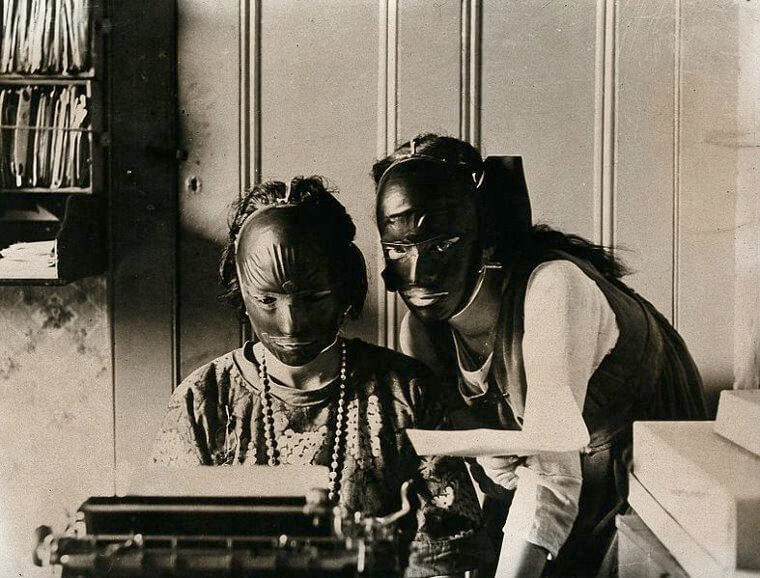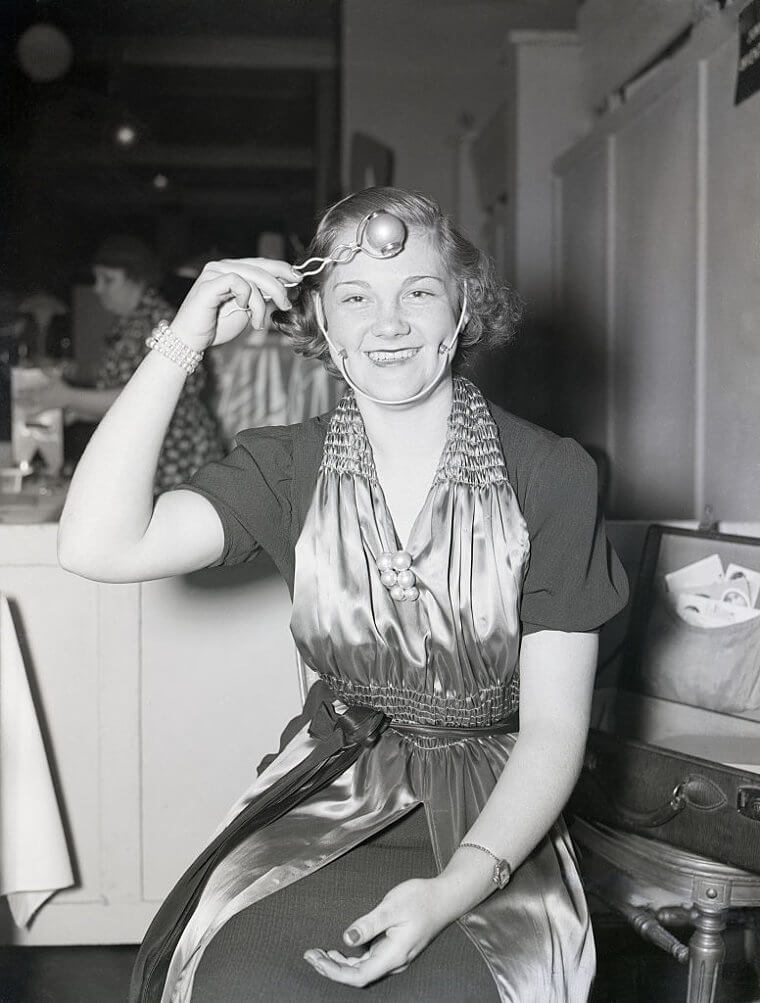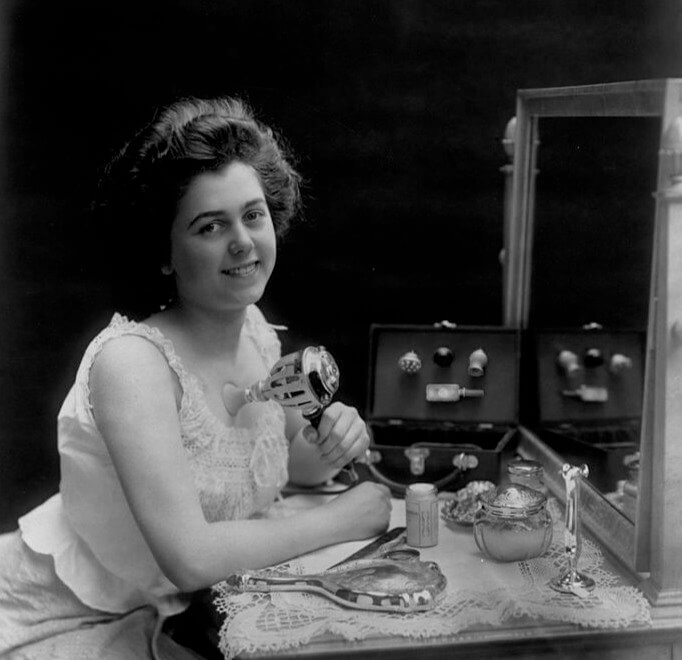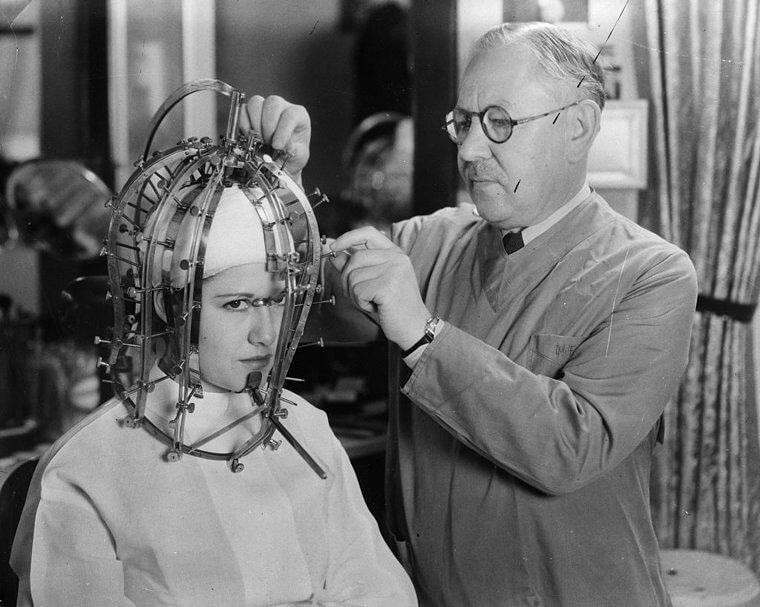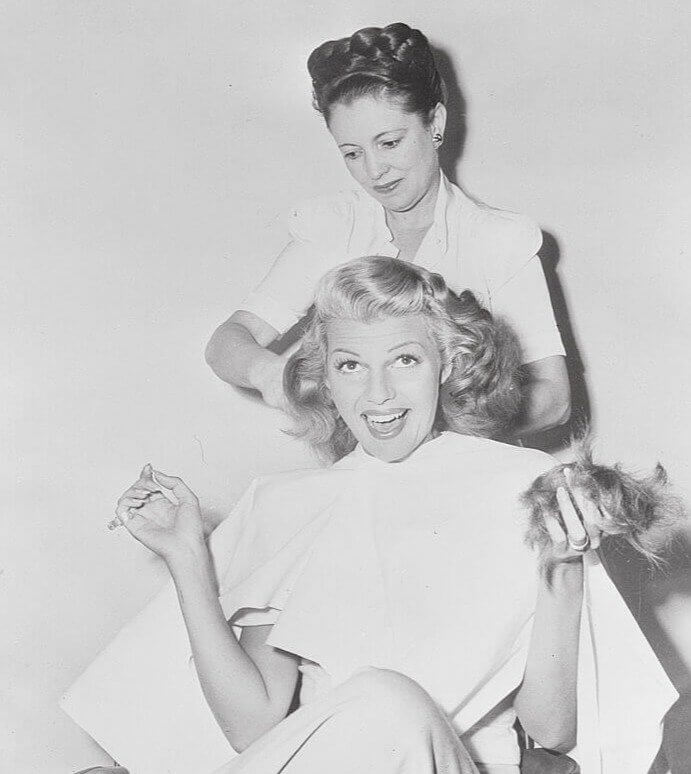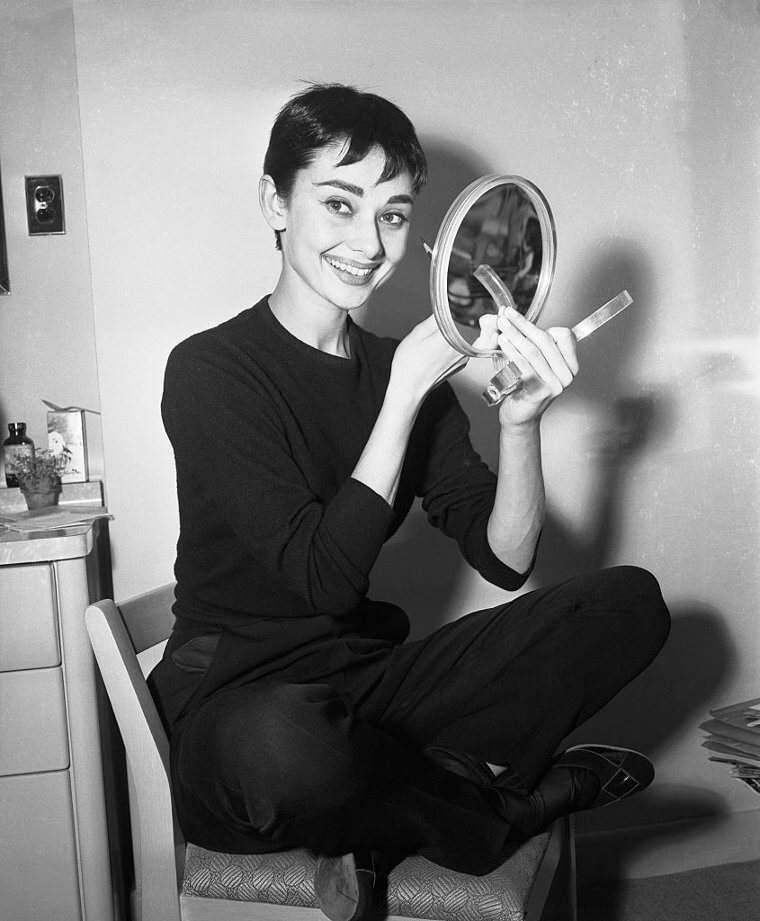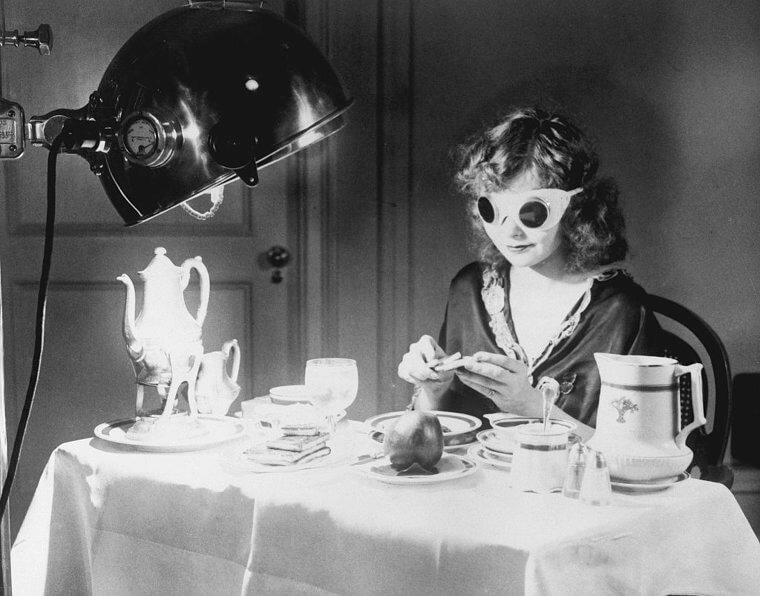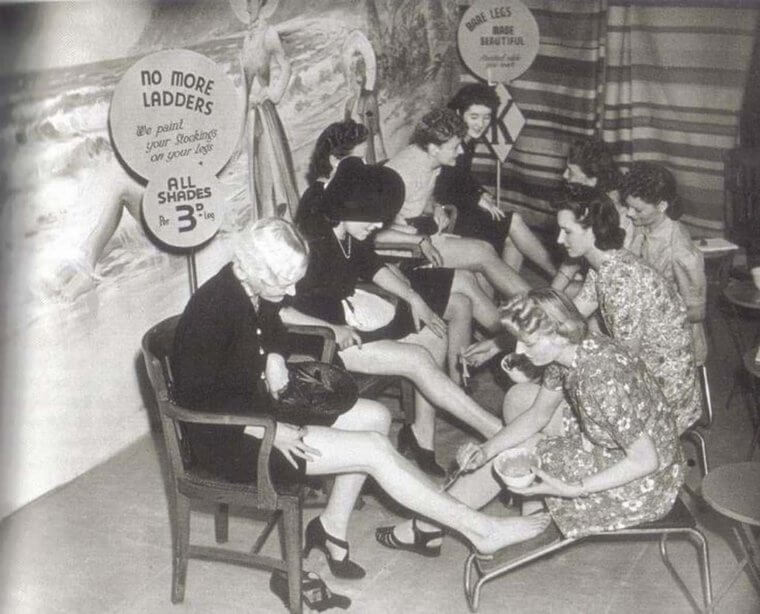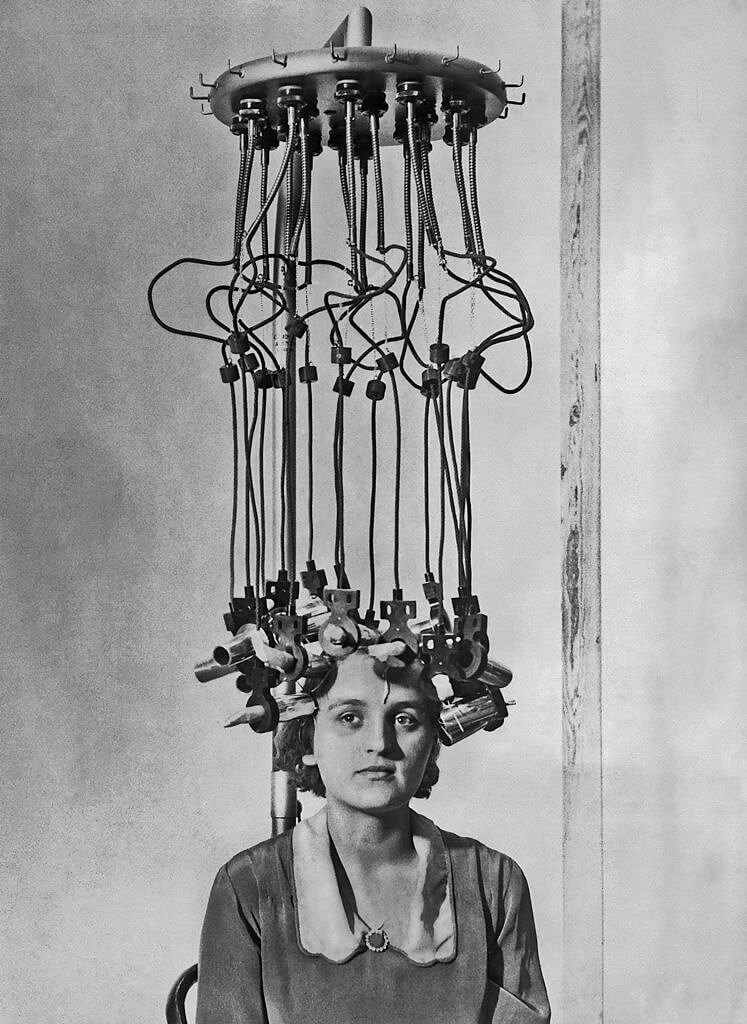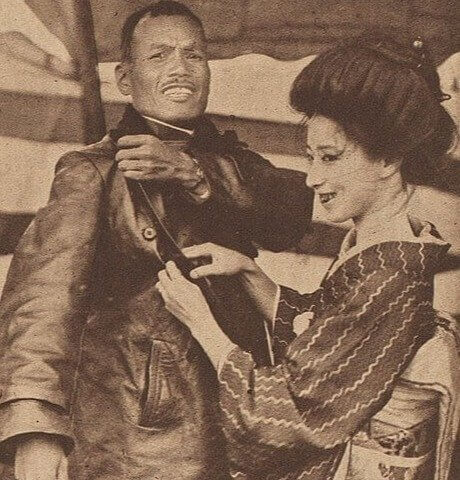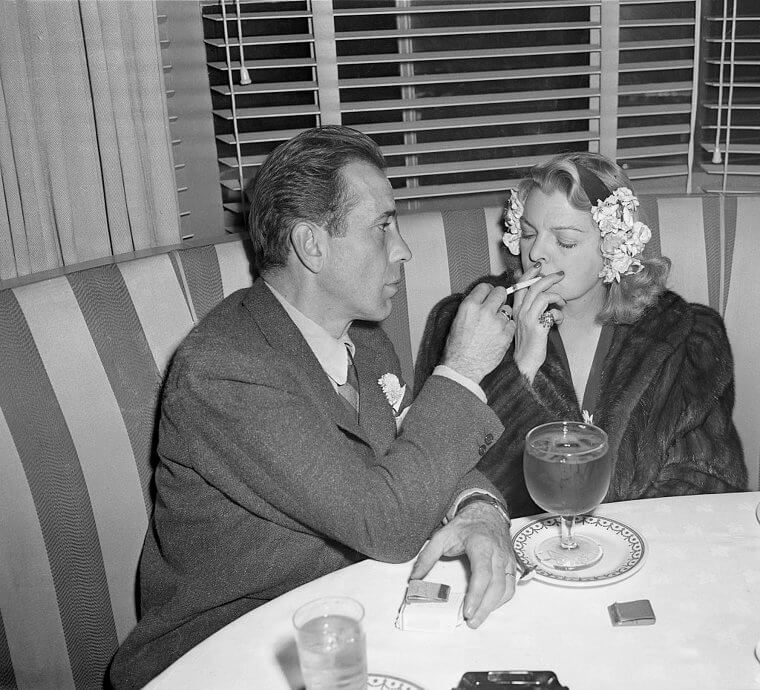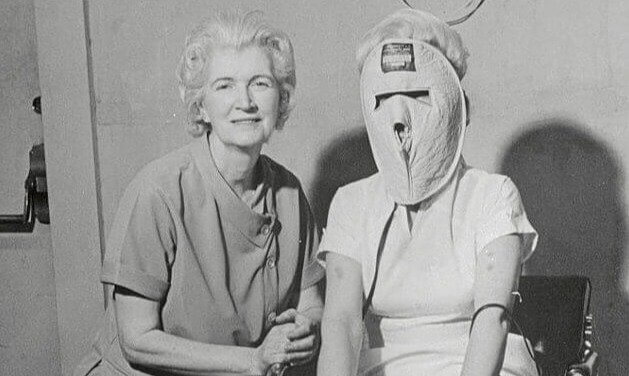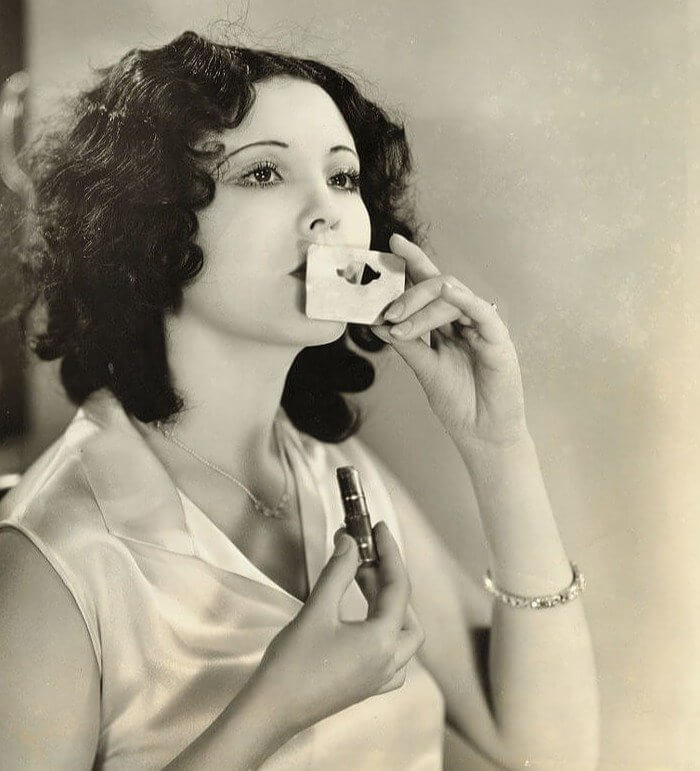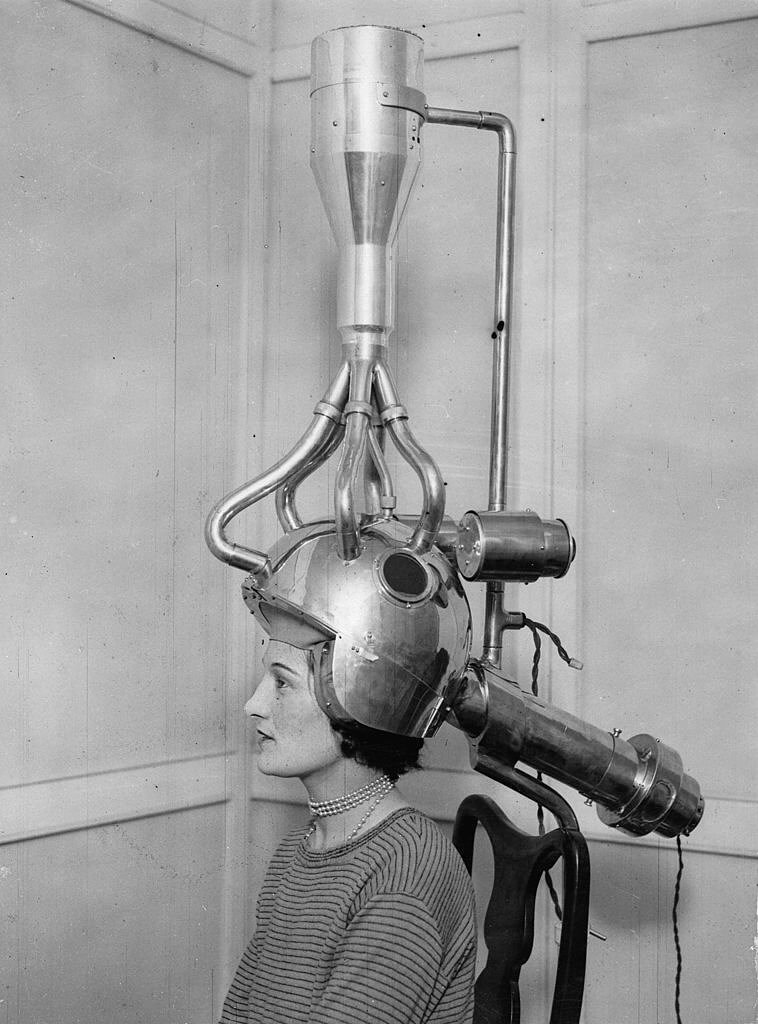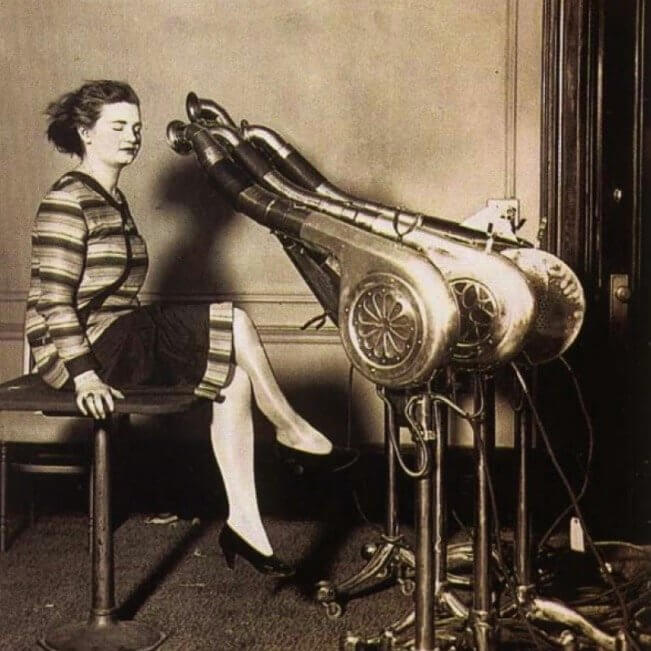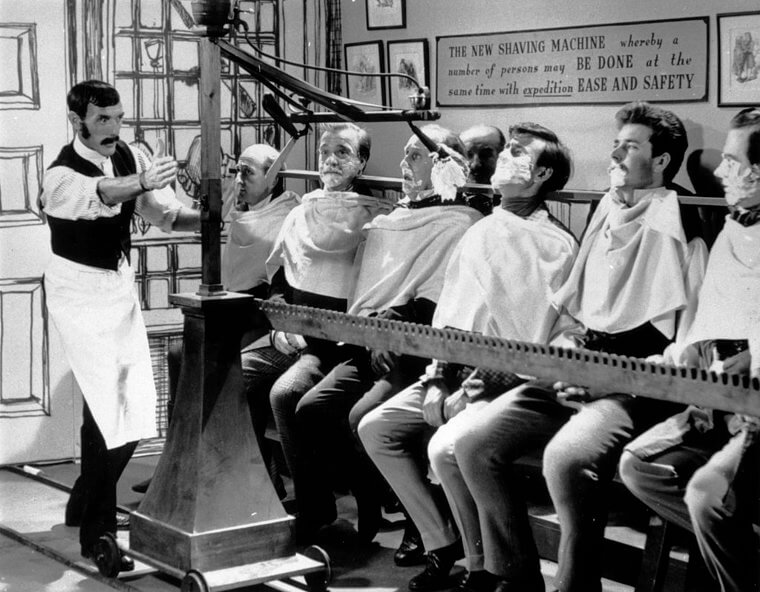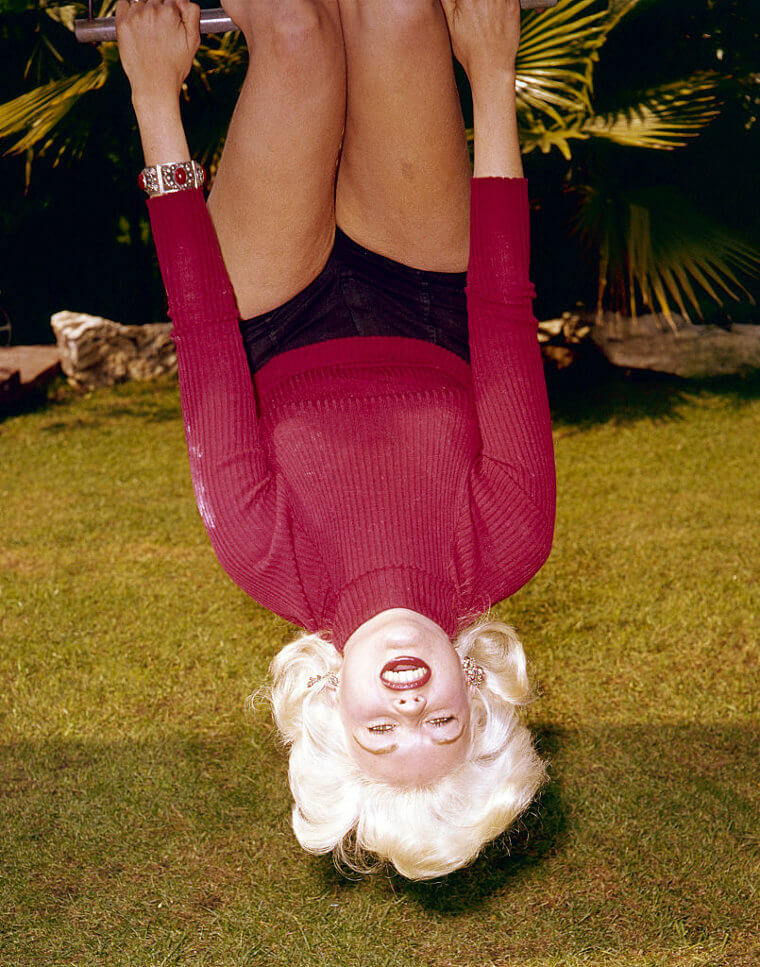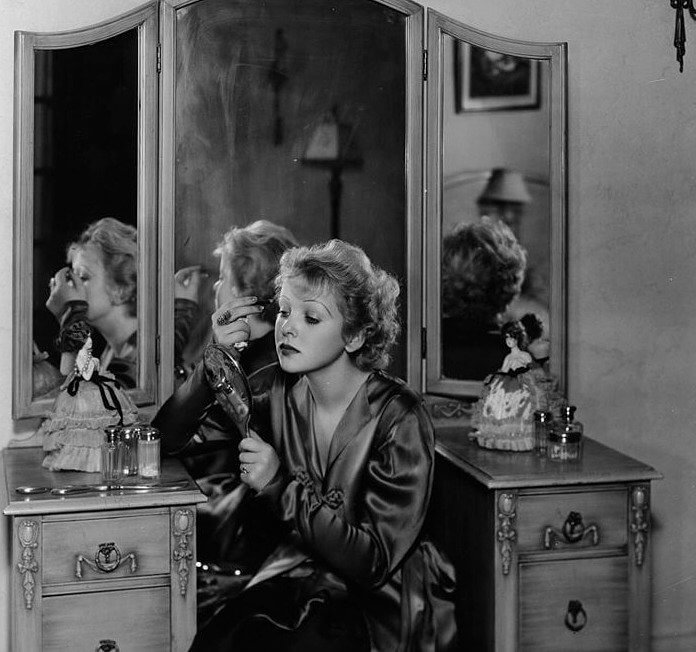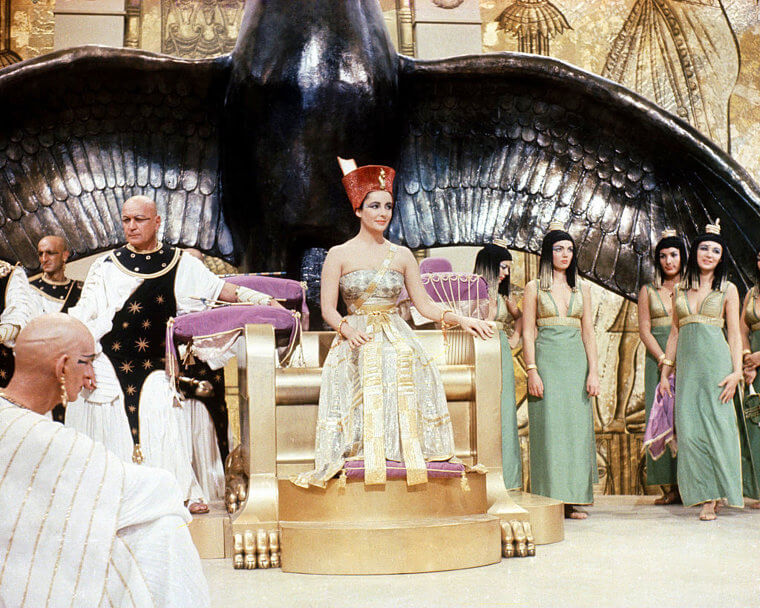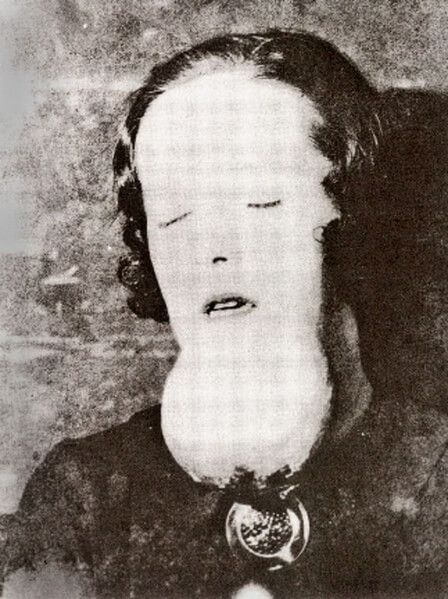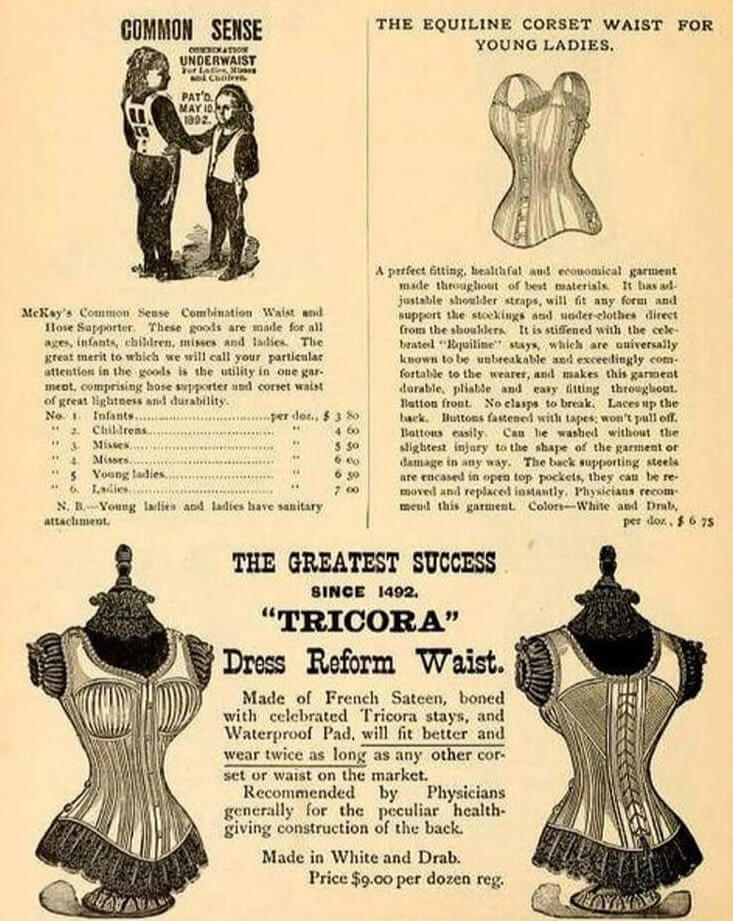Rubber Beauty Masks
Skincare treatments are certainly nothing new, and people have been slathering things on their faces for a younger look for centuries. However, these early beauty masks made out of rubber have to be among the creepiest-looking skincare devices ever conceived. They look like something you might see in a horror movie, and we're sure some modern filmmakers were inspired by beauty masks like these from the early 20th century.
While we're not sure if these things actually worked or not, would it really be worth wearing even for a small gain of slightly fewer wrinkles? We think not.
Dimple Device
This scary-looking device was invented by a woman named Isabella Gilbert in 1936. We're not sure why she invented it or even what gave her the inspiration, but we're pretty sure we've seen something similar in a horror movie. The dimple device was essentially a spring-loaded mask you could wear to achieve those perfect dimples you've always wanted. However, the dimples were only temporary, so you would have to wear this before every night out.
So, this device required a good bit of devotion, which might be why it's no longer around today. The way it looks on one's face could be another reason the dimple device disappeared.
Freckle Remover 1000
No, it wasn't actually called the Freckle Remover 1000, but we think that'd be a pretty good name for a machine like this. How else would you dissuade people's fears after they saw a photo like this? The device pictured here is actually a machine that used CO2 to remove freckles in the early 20th century. A single point, like on a tattoo machine, would poke and remove freckles from people's skin.
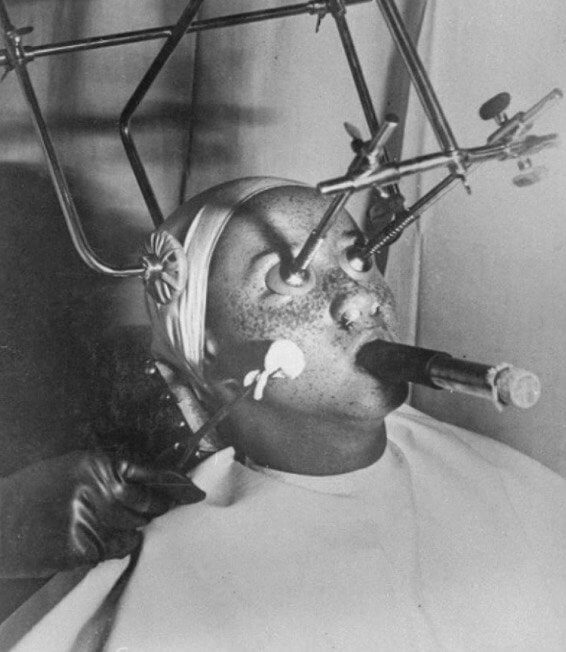
All they had to do was wait a week for their skin to heal. While it worked, it wasn't exactly healthy. Plus, we don't know if we could go through the trauma of having to strap into this thing back in the day.
Boric Acid For Sparkling Eyes
Get ready because this is a wild one: American actress Joan Crawford said that she used boric acid to get her sparkling eyes. Who wants to put acid in their eyes?! Apparently, this dazzling lady. Boric acid is actually a pretty common ingredient in modern eye drops. However, that is only in very low amounts, and you should definitely not soak pads in boric acid and apply them to your eyelids.
It's thought that boric acid has mild sterilization effects and some eyewashes use it to treat irritation. But, again, that is in very, very small doses and ingesting the acid is actually really bad for you.
The Chest Developer
It's really great when an inventor is on the same page as you when it comes to naming their devices; we thought a great name for this would be the "chest developer," and the inventor agreed. This chest developer was created in the early 20th-century and promised women less sagging around the chest area. It apparently vibrated and massaged the area to promote growth. Not surprisingly, it didn't actually have any real results.
It might not be very great for someone to point something that beats directly at their chest. After all, your heart is located in the same general vicinity.
A Different Kind of Torture Device
We're just going to make up our own names for these devices from here on out because it's just too much fun. This contraption, which we will call the facial defect detector, was invented by Maksymilian Faktorowicz in 1932. This was a mask one would wear on their heads. It contained a lot of little adjustments that an operator could make to pinpoint facial "defects," as they called them in their advertising. The operator would then apply makeup to try and cover or alter those defects.
These things were apparently popular among Hollywood actors. The advertising even points out how facial features were enlarged on the big screen and that makeup artists needed a tool to catch defects that escaped the naked eye.
Receding The Hairline - Yes, You Read That Right
While most people would pay huge sums of money to do the opposite, Rita Hayworth actually had a procedure to recede her hairline. She did this in an attempt to look "less ethnic" for Hollywood, which is really sad. She also dyed her hair for months at a time and changed her name. The process she used to recede her hairline was actually called hair electrolysis, and it works exactly as it sounds.
A doctor would take a metal probe and use it to shock the hair follicle, essentially ensuring that it didn't grow back. It sounds like a pretty painful procedure, especially if you had to do it to avoid discrimination.
The Oxygen Take Awayer
Actually called the Glamour Bonnet (our name is better), this device and mask were marketed as a skin treatment during the 1940s. The device simulates the oxygen levels one might feel at high altitudes, thus lowering the air pressure. The thought process behind this was that this simulation would somehow stimulate your complexion. We aren't too sure, but basically, people were looking to improve their skin using this contraption.
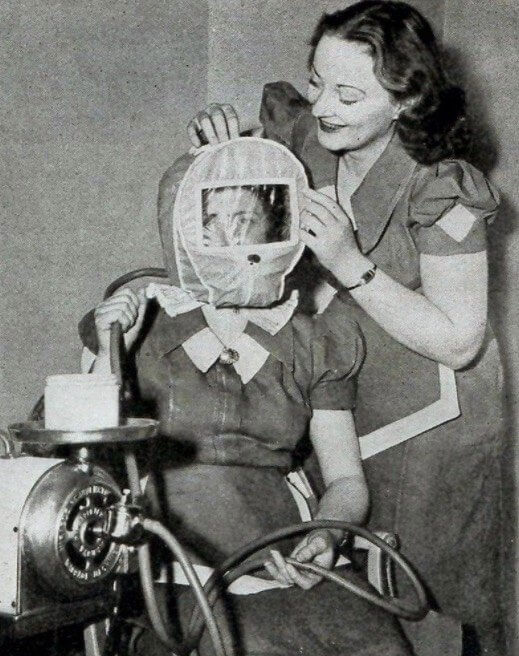
These were invented by a woman named D.M. Ackerman in Hollywood, California, of course. The window seen here is so that the patient can read a book while slowly suffering asphyxiation.
An Extremely Dangerous Eyelash Treatment
Audrey Hepburn's signature look was reportedly a result of a pretty intricate process. The actress's makeup artist would apply eyeliner and then separate her lashes one by one using a safety pin. We certainly can't argue with the results, but this painstaking process might not be worth it for most. In fact, one might spend the majority of their day just applying makeup if they adopt principles like these into their beauty regime.
There are also other tools out there that can do a pretty decent job separating lashes after mascara has been put on. It's another item to buy, but it beats using a safety pin.
Somersaults For Good Complexions
American film actress Frances Starr once told Harper's Bazaar that the secret to her good looks was plain food and somersaulting before bed. While there is certainly nothing wrong with doing somersaults, we're not so sure they have any actual effects on your complexion, which is what the actress claimed. She also said that it helped with indigestion, which kind of makes a bit more sense, but then again, it's just as likely that any form of exercise would do the same.
However, if there is anyone out there that's interested in the beauty routine, then these somersaults must be done before bed, and you must do 20 of them; otherwise, there's no point.
Lead Eye Liner
Here we have a beauty tip from the ancient Egyptians you might want to stay far away from. This one concerns their signature eyeliner seen here and in countless modern depictions. To achieve this look, the Egyptians used something called kohl. This was basically a powdery substance that contained lead. As you might have guessed, the Egyptians likely suffered all kinds of negative health effects because of this.
People have known and suspected that lead was harmful to human health since the 18th century. Despite this, people would have to wait until the early 20th century for Rimmel to create the first non-toxic eyeliner.
Take the Sun's UV Rays Home With You
This UV light was designed for those that wanted to catch some rays but didn't want to leave the comforts of their own home. And to be honest, this isn't all that surprising. After all, tanning beds are still a thing today, and we know that those can cause cancer. It's actually more surprising that the woman in this photo is wearing sunglasses, considering all the other skincare inventions we've seen.
It must have also made any room you put it in unbearably warm. Just imagine setting up a giant industrial UV light in your living. It would have been easier to just go outside to get a tan.
Tackling Weight Loss With Tapeworms
Weight loss scams and treatments are very common even to this day. So, it's a bit relieving to know that people used to go through even more extremes in a bid to lose a few extra pounds. One of the most dangerous techniques to lose weight started in the early 1900s. Companies sold people tapeworms that they could swallow. Yes, people used to give themselves a parasite in order to lose a bit of weight.
After the tapeworm got you down to your desired weight, you could take a pill, which was effectively a treatment. This might seem like a thing of the past, but unfortunately, it is still practiced in some places today.
Painted On Pantyhose
People who have some knowledge about World War II likely know that even those who didn't physically fight in the war were forced to give up things because of the war. One of the items that happened to be in short supply at the time was nylon. Used in everything from parachutes to bags, the material was diverted to the war effort and away from making pantyhose for the general populace.
This led to people getting a little inventive, and it soon became fashionable to replace nylon with paint and even gravy on occasion. The idea was to basically paint your legs and make it look like you were wearing pantyhose.
Weight Reducer
This photo is actually kind of sad on a lot of levels. For one thing, this never actually went away. The machine pictured here is a thing of the past, but the actual concept of massaging muscles to lose weight is still being replicated throughout the weight loss industry. While we're not sure how this machine actually gave you a massage, we are sure why you no longer see it around today.
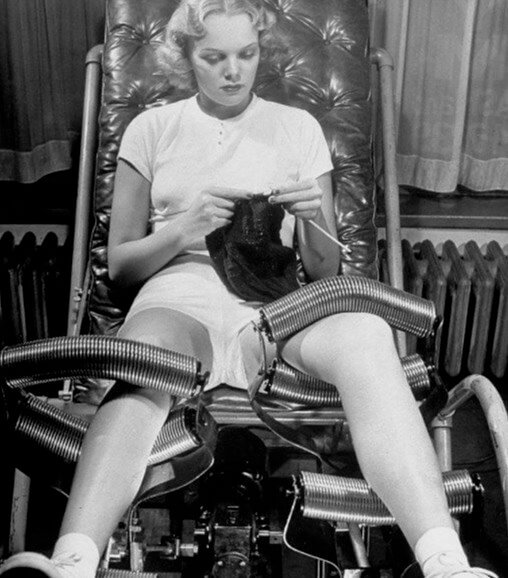
It's simply too big and cumbersome to be practical in today's society. Unless you have an entire gym in your home, there's really nowhere most people could put one of these bad boys.
Want A Perm? Think Again
Before the advent of modern hairstyling machines like blow dryers and whatever they use for perms these days, humanity had things like this. Apparently, this is how one got a perm during the industrial revolution. These machines were invented by a guy called Charles Nessler in 1906 and were called permanent wave machines (we know, not as catchy as perm contraption 1000). These large machines were actually very popular until around the 1940s.
The machine would heat your hair and add in a little water and chemicals for good measure, leaving you with a curly perm when everything was said and done.
Using Lysol To Clean... Areas
While many still use Lysol to clean and disinfect their homes today, people actually used it to douche once upon a time. Yes, that's right, it was actually used widely as a douching agent up until around 1960. People also utilized it for birth control during this period. We guess the reasoning was that if it could disinfect your home, then it could disinfect other things. However, it actually led to around 193 deaths.
The text in the ad is also pretty cringe-worthy, but we guess the pursuit of beauty and hygiene makes people do strange things. Luckily, Lysol is only used to clean countertops today.
Blackened Teeth
The women in Japan have been blackening their teeth for centuries, and the practice is still conducted to this day among some. The reason for this is actually pretty fascinating. Black was considered to be an immensely beautiful color, unlike in the west, where it has often symbolized impurity. However, only married Japanese women would blacken their teeth to symbolize that they were, in fact, married.
The tradition eventually faded out among the general populace and was relegated to the wealthy. Today, very few people still practice this tradition, but it is still possible to see someone walking around with black teeth.
Nose Shaper Model 25
Humans have been wearing things to reshape their bodies and improve their skin for thousands of years. However, the model 25 nose shaper pictured here might be one of the scariest of the modern era. Actually called the Trados Nose-Shaper Model 25, these things were all the rage in 1918. While we can see why one might want to change facial features before modern plastic surgery, this might be taking it a bit too far.
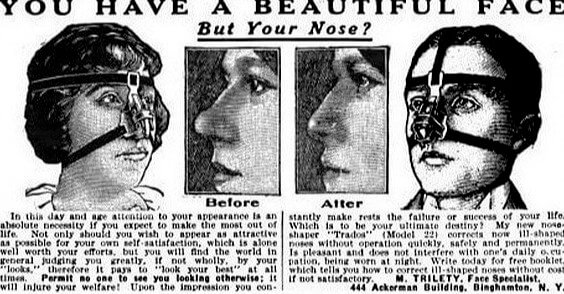
It looks pretty painful. And while that ad is actually kind of funny, it's funny in a bad way. It's as if the ad is trying to give us a backhanded compliment or something.
Hollywood's Torturous Diet
Hollywood really was a different place back in the day. Judy Garland once said that the executives at MGM wanted her to lose weight, so they put her on a strict diet. She would only consume chicken soup, coffee, and 80 cigarettes a day. While we definitely do not under any circumstances recommend this specific diet, we can see how this one might work. It basically combines starvation and nicotine.
Garland also said that she was put on diet pills, which are a bit more dubious when it comes to whether or not these things actually work. There are still a plethora of pills out there today claiming that they can help you lose weight.
Heat Masks and Ice Bath Masks
Once upon a time, women covered their faces in literal ice cubes. These ice masks were the only way to cool down your face before Max Factor invented something a bit more modern. He was the same guy who invented the large contraption that measures face defects we looked at earlier. His later invention isn't as wacky as that one, as many people still use ice and other cold-producing devices to better their skincare regime today.
On the other end of the spectrum were the heat masks featured above. These were wrapped around women's faces for smoother skin.
Stencils For You Lips
Every era apparently has its completely unneeded inventions. This lipstick stencil promised people that they could apply their makeup perfectly if they used it. Of course, applying lipstick isn't that hard, which might be why these little gadgets are no longer around today. Makeup is already pretty expensive; why would you want to spend more on something that really doesn't have any benefits? It also looks kind of creepy when attached to the face.
Then again, maybe they do work. That is if you want "cupid's lips," as the ads called it.
A Hair Dryer for Aliens
While we've already seen one version of an early hairdryer, there were apparently many more. This one might be a bit smaller than the last, but it still looks tough enough to reach your brain waves. It also has a kind of cool futuristic look to it. However, we know these were short-lived, and thankfully people can dry their hair using a handheld dryer in the comforts of their own homes.
This photo also makes us wonder what is going on with all the tubes in the back of the machine. What more do you need to dry hair than just plain old air?
Defect Magnifier
Here, we have another machine built to find facial defects. However, it uses a different method than Max Factor's contraption. This machine apparently magnifies your face so that a beautician can get up close and personal with your facial defects. While we're not sure how exactly that works, considering facial features are pretty much there in plain sight, this thing does look more futuristic than Factor's contraption.
However, we might have to skip this beauty technique. It looks awfully risky in there, even if it does only contain a giant magnifying glass or something of a similar nature.
Using A Literal Iron
Ever wonder how people got their hair to look so straight back in the day? Well, wonder no more. The hair treatment used before the invention of a hair straightener is actually a fairly simple one. People simply used the same iron used to straighten clothes. Yes, that extremely hot flat surface used exclusively to flatten clothes today was also used to get hair straight before the modern hair straightener.
While we're not sure exactly how many injuries resulted from this, we can safely assume that it was even worse for your hair than modern straighteners.
A Vacuum For Your Face
If you ever stuck the end of a vacuum to your face as a kid, then you might be able to relate to this photo. These contraptions were around in the 1930s and promised people smoother skin. It also probably came with assumptions of cleaner skin, but now we know beauty techniques like these are filled with just that: assumptions. It also looks a bit terrifying for the patient in this photo.
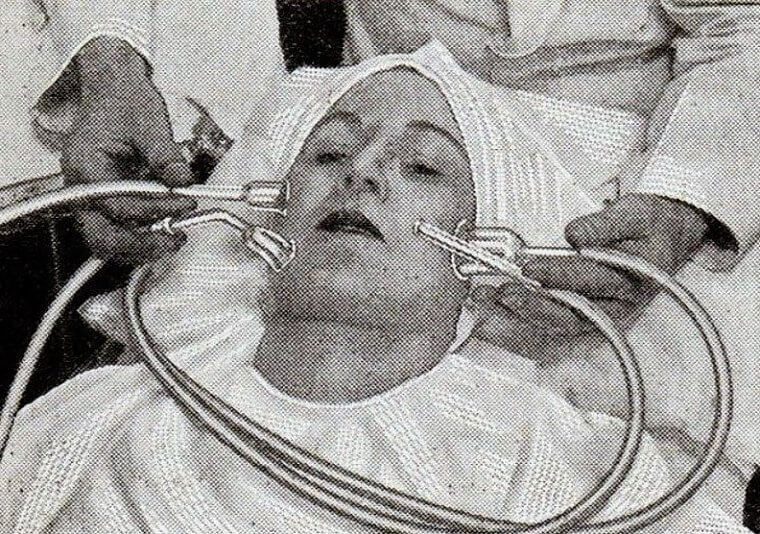
It actually kind of looks like someone is going through surgery here, and we imagine that same type of panic was going through this poor woman's mind during the whole process.
Drying Your Hair Using Turbines
This not so little contraption was used to dry hair at the advent of the 20th century. While we're sure it worked pretty well (how could it not with what looks like five turbos attached to it), we're wondering what the actual market was for a device like this. It's just so laughably large; it doesn't look like it'd fit comfortably in any bathroom we've ever seen.
It must have been extremely loud as well. With all the apparent cons of the design, it'd probably be better just to dry with a towel and wait half an hour for your hair to dry fully.
These Beauty Masks Just Keep on Getting Creepier
Why do all of these early 20th-century beauty masks look like they came out of a horror flick? This one was invented by a woman named Helena Rubinstein and, like other skincare treatments, likely promised to get rid of those wrinkles and blemishes. However, like the other masks on this list, it probably does neither of those two things. Instead, it's likely a health hazard, being made out of what appears to be elastic.
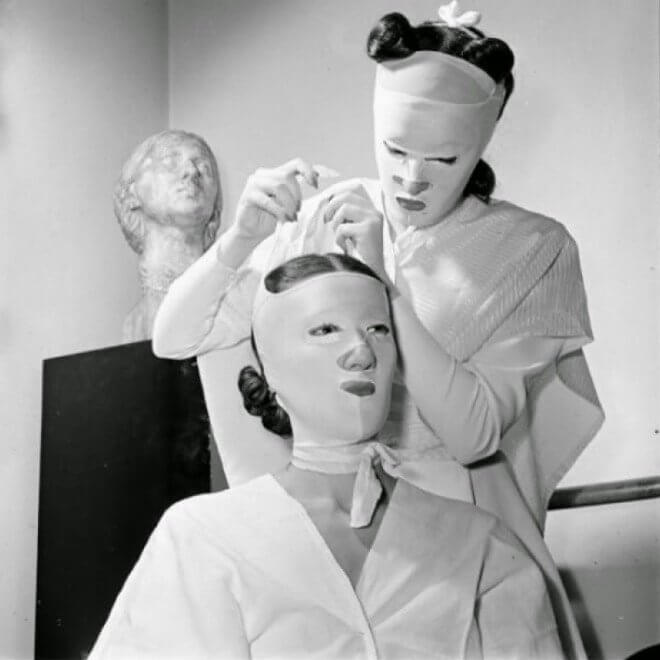
We mean, just imagine if the little holes you're supposed to breathe out of somehow move even slightly. It might be a recipe for a panic attack, especially if you have claustrophobia.
Before There Was Sunscreen
Before there was sunscreen, people apparently walked around looking like ghosts. We don't know why they didn't stick to umbrellas in the 1940s, but for whatever reason, people temporarily switched to wearing these suits in order to shield themselves from the sun. While there are many skincare techniques on this list, this one might actually make the most sense. We mean, it does look ridiculous, but nobody wants to catch skin cancer.
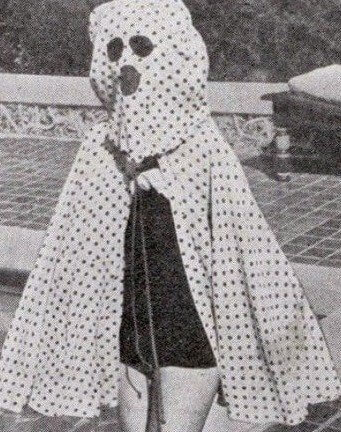
It was also apparently worn to ward off freckles. We really don't understand all the hate on this list towards freckles, but then and now, people seem to want to get rid of them.
Like Assembly Lines, But For Your Face
You have to give it to the era of industrialization: their wacky contraptions are certainly imaginative. This shaving machine was meant to shave multiple people at once. While it obviously isn't the best idea to give extra sharp blades to a machine with a lot of moving parts, this must have been all the rage back in the day. We just imagine some guy in a meeting explaining how this will cut down on labor costs and improve efficiency.
The look on the men's faces is pretty hilarious as well. It's either a look of amazement or one of existential fear seeing this thing swing blades around so close to your face.
Hang Upside Down To Revive Complexions
Fannie Ward once told Harper's Bazaar that the secret to her looking so young was simply hanging upside down for half an hour every day. She said that this pushes the blood to places it normally doesn't get to and helps revitalize one's skin. While this certainly sounds like it might be plausible in some alternate universe, we're betting the secret has more to do with good genes than hanging upside down every day.
You would think something like this would be a thing of the past, but there are still plenty of websites out there telling people that hanging upside down can help rejuvenate your complexion and lead to better skin.
Table Salt And Slaps
Yes, that's what director Ida Lupino told people to do if they wanted firmer skin back in the 1940s. It isn't exactly conventional, but then again, none of the things on this list really are. However, we will say that at least one of her pieces of advice kind of makes sense if you stretch that word out to its very limit. People still incorporate salt into skincare products today.
Places like the Dead Sea, which contains a lot of salt, are also touted as being good for skincare. However, the slapping part of the regime seems a bit far-fetched to us.
Egyptians And Lipstick
People have searched for and used beauty techniques for thousands of years, and the ancient Egyptians are probably one of the best examples of this. They used to use something called bromine in their lipstick. The naturally occurring red chemical was used as makeup, and it likely had some pretty severe consequences. We know today that bromine can cause a plethora of health issues if someone is in contact with it over extended periods of time.
The chemical can cause kidney failure and brain damage, but it can also lead to things like hallucinations, psychosis, irritability, confusion, and even a coma. This is one of those makeup trends we don't want coming back anytime soon.
Using Radium As Teeth Whitener
Radium has a long history of being misused. However, people did not understand the true dangers of radioactive material during the start of the 20th century. It was once used in glassmaking, and people still collect radium pieces that glow green with a blacklight today. It was also once used as a teeth whitener. While we're not sure if it actually made people's teeth glow green, we do know that its effects were extremely harmful.
People coined a term for women who worked with the substance and painted watches that glowed in the dark: Radium Girls. Many of them would go on to die or suffer long-term health effects.
Getting Rid Of Acne Via Poison
Acne is something many people still struggle with today. And while it can cause things like lower self-confidence, its physical health effects are pretty minimal. So, the fact that people used toxic chemicals to get rid of acne in the 19th century might come as a surprise to some. One of the most common ingredients in these acne treatments was something called nux vomica. If the name sounds like something unpleasant, that's because it is.
The ingredient contains strychnine, which is a deadly toxin that can cause muscle contractions and affect the brain. It's actually still in use today as a medicine to treat stomach issues, but there is no evidence it actually works, according to WebMD. Other acne treatments of the time used arsenic.
Skull Shaping
It's good to know that going to great lengths just for the sake of beauty isn't just some modern, western thing. Take the Maya, for example, who used to strap children's heads to things in order to create a deformity and shape their skulls. And it turns out that this practice was actually quite common in different cultures around the world. The Huns, Germanic tribes, native Americans, Hawaiians, and Tahitians all shared similar practices.
Researchers suspect that this specific practice started around 1000 BC and that it was done mostly for aesthetic reasons and didn't relate to social status.
Turn That Frown Upside Down With Tape
Spotted in an old magazine column from 1941, this advice might have some out there raising their eyebrows. The columnist told women that they could encourage themselves to smile more by wearing a piece of tape between their eyebrows. It might seem kind of funny now, but people still do little things like this to encourage themselves to do something or to not do something.
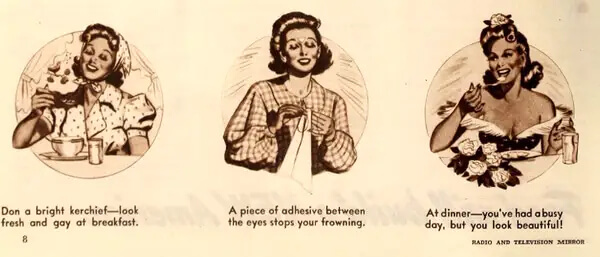
However, with that something being smiling more, this column definitely looks like a product of the time it was written in. The other pieces of advice listed here are pretty hilarious as well.
Silk To Prevent Sagging
Health columns were all the rage in magazines back in the day, and to a certain degree their still pretty popular today. However, this one from Harpers Bazaar might be a little out there. It instructed people to tie something soft, like a linen or silk ribbon, from the bottom of their faces to the top of their heads. The thought process behind this was that the ribbon would keep muscles from sagging while you slept.
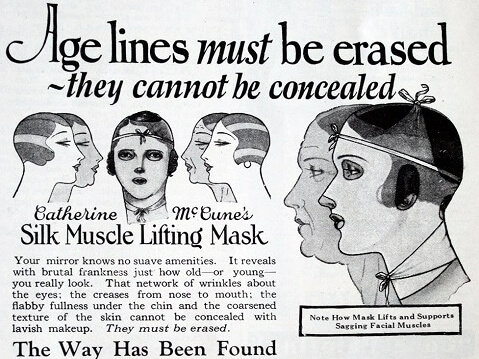
The article even pointed out how much time people spend sleeping, saying that this time could be used to continue and improve one's facial muscles. Yeah, we think we'll pass on that one.
Toilet Mask
Would you look at that? We didn't even have to make up a name for this beautiful invention. It's especially funny how whoever came up with this name seems to be second-guessing themselves by throwing in another name between parenthesis. Toilet masks weren't actually made to do what it sounds like. Instead, they were simply beauty masks that weren't meant to make your face sweat and your pores open up.
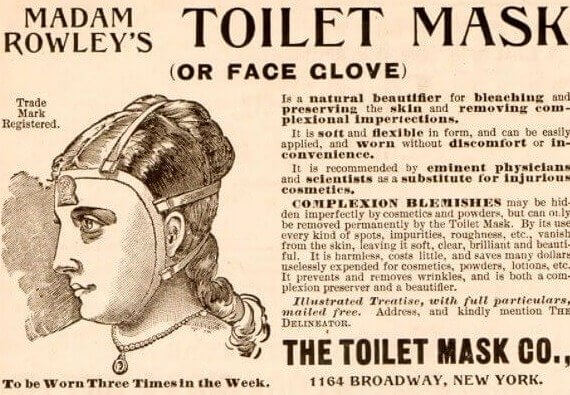
The thought process behind this was that it would be beneficial for complexions. Not only that, but this mask claimed to remove blemishes completely, wrinkles, blemishes, and freckles included.
Wearing Whale Bones
Another weight-loss contraption, pretty much everyone is familiar with corsets. The tight-fitting clothing has been portrayed to death in modern media, and fittingly so, as that's sometimes what resulted from wearing a corset. The undergarments were actually made from whale bones, which is probably how they were able to make them so rigid. However, that rigidity could lead to deformations if worn long enough. This, in turn, slimmed one's figure, but it also damaged the organs.
Sometimes that damage could lead to a very early death. The old ads, such as the one pictured here, sure did know how to turn a phrase, though, using the term, "Dress reform waist." Too bad they didn't know a thing about irony, though, and the use of the term "common sense."

